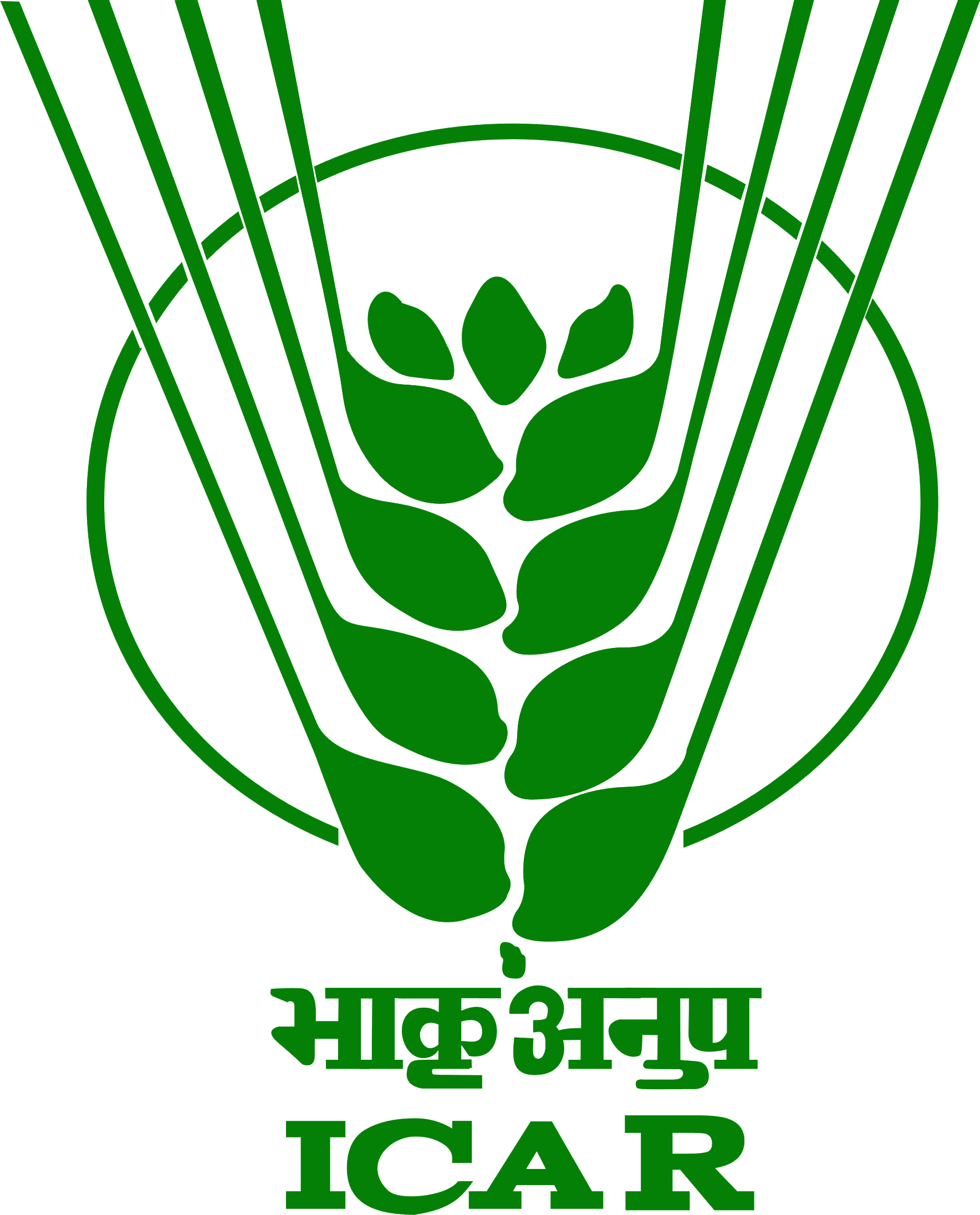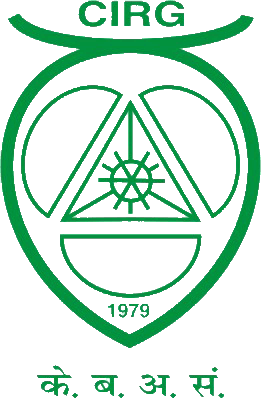Assam Hill Goat Field Unit Research Station, Assam Agricultural University, Burnihat, Assam
Principal Investigator
Dr.Naba Nahardeka Professor (AG&B), AAU, Burnihat, Assam
Activity assigned and targets fixed for each activity during the period
Apart from implementation the unit was assigned following work.
- It was suggested to take up the issue of breed characterization of Assam Hill Goat in collaboration with NBAGR, Karnal.
- Creation of Self Help Groups involving women should be promoted in the adopted area.
- Impacts analysis of improved breeding and health cover facilities should be carried out and documented.
- The Unit is getting sufficient budget form the project under NEH plan. Therefore, the Unit may adopt one additional cluster in distant location to document variation in the genetic groups.
- Identification, selection and rearing of approximately 100 kids for future bucks. The selection should based on type of birth and weaning weight.
- Distribution of superior bucks amongst farmers of adopted villages and also to the goat farmers of the state for genetic improvement purpose.
- Distribution of fodder tree saplings and development of fodder plots at farmers’ door.
- Organization of animal health, vaccination and deworming camps, trainings to the farmer in the field units.
- Establishment of elite flock.
- Development and execution of a health and fodder calendar.
- Documentation of the breed.
Activity carried out during the period
This is a field based unit. Major work on pedigree and performance recording, bringing upon genetic improvement have been carried out on farmers flock distributed over various clusters. Following are the detail of work carried out and achievements made so far.
Detailed Achievements
The Project covers four clusters namely Batabari in Mangoldoi district, Tetelia and Tepesia in Kamrup (M) district and Nahira in Kamrup (R) district. The total number of beneficiaries in these four clusters are 209 with 1667 numbers of goats. Thirty four selected bucks of superior quality, true to the breed have been distributed to the field units and NGOs of the state. A total of 5000 doses of frozen semen of Assam Hill Goat from selected elite buck have been stored. Training on “Scientific management of Goats” and other necessary technical guidance is provided to the beneficiaries at regular interval. Regular Health check-up Camp is organized at the field units. Vaccination and deworming schedule is being followed at the two units.
Flock Statistics
On the basis of the survey four field units, namely, Batabari (FU-1) in Darrang district, Tetelia (FU-2) in Kamrup (Metro) district, Nahira (FU-3) in Kamrup (Rural) district and Tepesia (FU-4) in Kamrup (Metro) district were selected with an average goat population of 700 in each unit. The opening balances of goats were 515, 455, 244 and 334 at Batabari, Tetelia, Nahira and Tepesia filed units, respectively. With population growth of 106.26%, the closing balance has raised to 624, 514, 210 and 291, respectively in the above field units (Table 1)
Table 1: Flock Statistics of Assam Hill Goat
Centres |
Opening Balance
(1.4.2013) |
Closing Balance
(31.3.2014) |
Male: |
0 – 1 M |
63 |
60 |
1 – 3 M |
170 |
207 |
3 – 6 M |
77 |
107 |
6 – 12 M |
83 |
104 |
Adult |
75 |
90 |
Total (M) |
468 |
568 |
Female: |
0 – 1 M |
66 |
45 |
1 – 3 M |
161 |
248 |
3 – 6 M |
102 |
170 |
6 – 12 M |
163 |
163 |
Adult |
588 |
473 |
Total (F) |
1080 |
1099 |
Grand Total |
1548 |
1667 |
Body Weight Growth
The average body weight of goats according to age, sex and type of kidding is given in Table 2. Male animals were found to be heavier than females in all the age groups, whereas the single born kids were recorded as superior over twining and triplet born kids.
Table: 2 Average body weight (kg) of goats according to type of birth in different field units (2013-14)
TOK |
Birth wt |
3 M wt |
6 M wt |
9 M wt |
12 M wt |
M |
F |
M |
F |
M |
F |
M |
F |
M |
F |
Single |
1.30±0.02
(291) |
1.24±0.03
(256) |
5.55±0.23
(251) |
5.66±0.14
(235) |
8.67±0.30
(201) |
7.70±0.19
(212) |
11.33±0.30 (151) |
10.16±0.20 (177) |
13.51±0.32 (77) |
12.81±0.29 (86) |
Twin |
1.22±0.06
(427) |
1.18±0.05
(413) |
4.98±0.08
(301) |
4.81±0.09
(299) |
7.61±0.23
(197) |
7.41±0.12
(164) |
10.10±0.42 (111) |
9.69±0.13 (123) |
13.44±0.29 (86) |
12.77±0.25 (91) |
Triplet |
1.19±0.01
(99) |
0.98±0.05
(119) |
4.79±0.24
(72) |
4.55±0.17
(101) |
7.42±0.29
(51) |
7.33±0.21
(77) |
10.16±0.51 (39) |
9.55±0.29(56) |
13.43±0.25 (29) |
12.79±0.60 (33) |
Overall |
1.28±0.02
(817) |
1.13±0.01
(788) |
5.22±0.07
(624) |
4.99±0.05
(635) |
7.9±0.08
(449) |
7.51±0.10
(264) |
10.56±0.49 (301) |
9.86±0.12 (356) |
13.51±0.34 (192) |
12.86±0.32 (210) |
Population Growth (%)
Considering the initial adult does the growth of the population is recorded to be 106.26%.
Table 3: Population Growth Under Report Period (2013-14)
Year |
Initial Adult Does
(A) |
No of Kids
(B) |
Total
(A+B=C) |
No of kids died (D) |
Population Growth (%)
(B-D)/C*100 |
2013-14 |
751 |
928 |
1679 |
130 |
106.26 |
Reproduction
The average age, weight at first service and first kidding in all the four units were recorded 257.95±7.07 days, 9.93±0.23 kg, and 412.98±15.44 days and 13.92±0.29 kg, respectively. The service period, kidding interval and gestation period for the field units were observed to be 87.41±5.32, 232.61±4.89 and 147.51±0.59 days respectively (Table 4). Out of 592 kidding, 928 kids were born of which single born kids were observed to be highest (51.69%) were followed by twins (39.86%) and triplets (8.45%) (Table 4).
Table: 4 Reproductive Performance of Assam Hill Goat (2012-13)
| Sl. No. |
Traits |
Mean ± SE (N) |
1 |
Age at 1st service (days) |
257.95±7.07 (239) |
2 |
Wt at 1st service (kg) |
9.93±0.23 (227) |
3 |
Age at 1st kidding(days) |
412.98±15.44 (247) |
4 |
Wt at 1st kidding (kg) |
13.92±0.29 (253) |
5 |
Service Period (days) |
87.41±5.32 (201) |
6 |
Kidding interval (days) |
234.61±4.89 (216) |
7 |
Gestation period (days) |
147.51±0.59 (287) |
Evaluation of Carcass Characteristics:
During 2013-14, a total of 30 Assam Hill Goats were studied for their meat quality and carcass characteristics. Ten animals of marketable age from each of the groups viz. Castrated, Non-Castrated and Females were subjected to various carcass related studies. During the study from meat production point of view, it was found that, castrated males were the best for carcass quality followed by non-castrated and females.
Table: 5 Carcass Characteristics of Assam Hill Goat
Particulars |
Castrated |
Non Castrated |
Female |
Live Wt. (kg) |
13.44±0.65 |
11.57±0.34 |
10.65±0.48 |
Dressed Wt. (kg) |
6.86±0.29 |
5.64±0.19 |
5.15±0.24 |
Hot Dressing % |
51.13±0.41 |
48.67±0.35 |
48.39±0.32 |
Cold Dressing % |
47.39±0.52 |
45.10±0.58 |
45.09±0.60 |
Carcass Length (cm) |
59.78±1.41 |
57.02±1.21 |
55.80±1.17 |
Wt. of Pluck (kg) |
0.452±0.04 |
0.418±0.03 |
0.393±0.02 |
Wt. of Inedible Offal (kg) |
4.07±0.21 |
3.33±0.10 |
3.27±0.26 |
Wt. of Skin (kg) |
1.05±0.05 |
0.9±0.05 |
0.85±0.08 |
Health Control Measures
Regular health control measures were practiced in the field units. Due to hot and humid climate, the animals are very prone to ecto as well as endo parasites. Deworming and vaccination of the animals against Enterotoxaemia twice in a year and PPR once in three year is a routine practice.
Table: 6 Prophylactic Treatments
Sl. No. |
Prophylactic measured |
Number of animals |
1. |
Deworming |
3021 |
2. |
Dipping |
3256 |
3. |
Vaccination FMD |
- |
4. |
Vaccination E.T. |
2568 |
5. |
Vaccination PPR |
788 |
6. |
Vaccination H.S./ other |
- |
7. |
Drenching |
721 |
8. |
Others/ Oxy. L.A./ camps |
5561 |
Gaps/constraints/shortfalls/excess and reasons thereof, if any
- Under field condition there is less control over breeding of the goats.
- Generally the farmers don’t rear male animals for breeding. Elite male with high productive and reproductive values are distributed for proper and systematic breeding of the animals.
- Less knowledge about the health measures, nutrition, housing, etc were initially observed among the beneficiaries. The implementation of the project has helped them a lot in improving all these aspects by trainings, holding awareness camps/ health camps etc.
- Full proof animal identification system may be standardized.
PC’s evaluation: very good (A) Good (B) poor (C)
------------------Very Good (A) -----------------
4.6 Future programme identifying the activities, timeline and targets for each of the activity
Since, the Unit is actively engaged in brining upon improvement in farmers flock following activities are to done priority basis.
- The Unit is getting sufficient budget form the project under NEH plan. Therefore, the Unit may adopt one additional cluster in distant location to document variation in the genetic groups.
- Identification, selection and rearing of approximately 100 kids for future bucks. The selection should based on type of birth and weaning weight.
- Distribution of superior bucks amongst farmers of adopted villages and also to the goat farmers of the state for genetic improvement purpose.
- Distribution of fodder tree saplings and development of fodder plots at farmers’ door.
- Organization of animal health, vaccination and deworming camps, trainings to the farmer in the field units.
- Establishment of elite flock.
- Development and execution of a health and fodder calendar.
- Documentation of the breed.
Remarks
The unit is doing very good work in field conditions.
|







